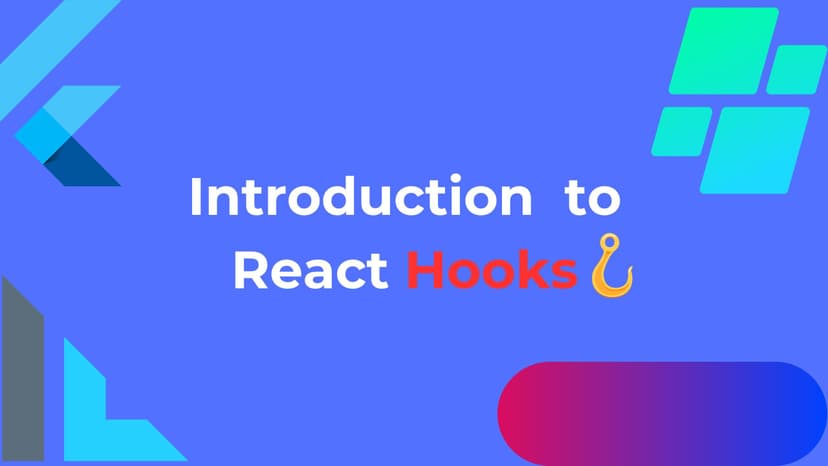2024-06-07 . 2 min(s)
Introduction to React Hooks

React Hooks are functions that let you use state and other React features in functional components. Introduced in React 16.8, hooks have become an essential part of modern React development.
useState Hook
The useState hook allows you to add state to functional components.
Example:
import React, { useState } from 'react';
const Counter = () => {
const [count, setCount] = useState(0);
return (
<div>
<p>You clicked {count} times</p>
<button onClick={() => setCount(count + 1)}>
Click me
</button>
</div>
);
};
export default Counter;
useEffect Hook
The useEffect hook lets you perform side effects in functional components. It's similar to lifecycle methods in class components.
Example:
import React, { useEffect, useState } from 'react';Custom Hooks
const DataFetcher = () => {
const [data, setData] = useState(null);
useEffect(() => {
fetch('https://api.example.com/data')
.then(response => response.json())
.then(data => setData(data))
.catch(error => console.error('Error fetching data:', error));
}, []); // Empty dependency array means this effect runs once after the initial render
return (
<div>
{data ? <p>Data: {data.message}</p> : <p>Loading...</p>}
</div>
);
};
export default DataFetcher;
You can create custom hooks to encapsulate reusable logic.
Example:
import { useState, useEffect } from 'react';
const useFetch = (url) => {
const [data, setData] = useState(null);
const [loading, setLoading] = useState(true);
useEffect(() => {
fetch(url)
.then(response => response.json())
.then(data => {
setData(data);
setLoading(false);
})
.catch(error => {
console.error('Error fetching data:', error);
setLoading(false);
});
}, [url]);
return { data, loading };
};
export default useFetch;
Hooks make your components cleaner and more modular, promoting code reuse and better organization.